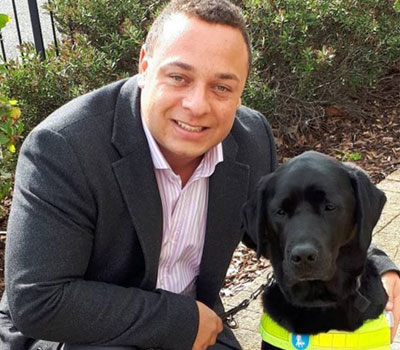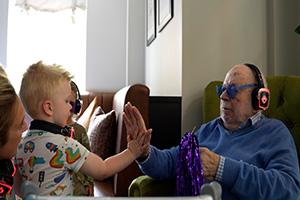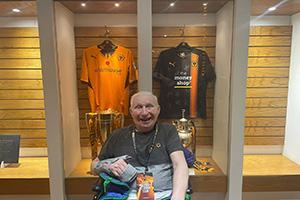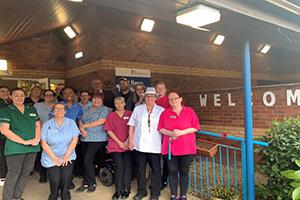Supporting People with Sight Loss in a Care or Nursing Home setting
If you support people with sight impairments as part of your working role, the following tips will help you understand the difficulties they may be facing and what you can do to help
Only 5% of people who are registered blind see nothing at all so learn to recognise the signs of sight loss as it is more common than you may think and can be easily missed. Look out for changesin personal appearance, difficulties when reading, problems recognising people or if the person has given up a hobby, becomes clumsy, trips more often than usual or tells you they have visual hallucinations. Other signs include anxiety when using stairs, hesitancy in bright light or sunlight and adopting unusual head positions.
Make time to chat so you can understand how they’re living with sight loss and how to help them make best use of the sight they still have. Find out about eye conditionsand how they affect vision as sight loss varies and affects people in different ways.
Help promote good eye and spectacle careby ensuring glasses are clean, labelled with the purpose (e.g. red sticker for reading) and the person’s name and make sure there is a spare pair available.Remember the 3 C’s - correct, clean and current glasses.
Ensure eye tests are carried out when neededand at least once a year. Some opticians offer a domiciliary service which may be helpful.
Are you and your colleagues communicating effectively with the person? Introduce yourselfwhen you come into the room to ensure the person knows who you are, say when you are leaving to avoid confusion and always communicate directlywith the service user, rather than through a family member or sighted companion.
For written information, Bigger, Brighter, Bolderhelps people to see better so use good colour and contrast in larger font or offer to read to service users. Use meaningful signifiers and appropriate well contrasted and consistent signage. Provide information in the person’s preferred formatfor example braille, large print, audio or electronic format.
Recognise the importance of having good lighting, whether this is natural light, or a reading lamp and make sure the lighting fits the purpose of the activity and is comfortable to use for the individual. Use vertical blindsto control adverse effects of natural light such as glare and shadows. Artificial lighting levels should be consistent, even and controllableand avoid lampshades and lighting features that allow the bulb to be viewed directly.
Avoid highly patterned wallpaper, furnishings, carpets or tableclothsas this can confuse visual processing and people with sight loss may mistake patterns with different images. Avoid reflective surfacesand clearly markglass doorsto make them easier to see.
Use colour contrasted place mats, plates and cupsfor dining to make it easier to identify food and drink and consider using plates with taller rims to avoid food falling off them.
Encourage a consistent clutter free environment to avoid trip hazardsand ensure all hazards are marked clearly, for example kerbs and steps have colour contrasting strips. 
Familiarise people with the layout of relevant work or home areasas appropriate and think about how things might be improved with tactile and/or audio signage and colour contraststo distinguish features of the environment.
Be alert to other conditionssuch as hearing loss or dementia as sight loss can be compounded by these so ensure you identify the appropriate health support to minimise the impact.
Involve your service users in decisionsas people need to be supported to develop their own strategies for coping with sight loss. Ask them what they would like to do and work with them to find practical solutions. Make time to reflect upon any changes and ask for feedbackon what works well and what could be improved.
We can provide assessments to identify aids and adaptations to support people with sight loss, along with visual impairment awareness training. For more information, email daniel@visualisetrainingandconsultancy.co.uk or visit https://www.visualisetrainingandconsultancy.com/training/visual-impairment-awareness-training/
Daniel Williams was diagnosed with retinitis pigmentosa at the age of 8 and is now improving the lives of others living with sight loss through his business, Visualise Training and Consultancy https://www.visualisetrainingandconsultancy.com/





